Michael Hepworth
Glen Wexler interviewed by Jimmy Steinfeldt
HOLLYWOOD (Perfect Music Today0 1/16/2–Jimmy Steinfeldt: How often do you clean your lens?
Glen Wexler: I actually clean it every time I take it out to shoot. However I don’t take a camera everywhere I go. I am interested mostly in the creative process and not so much the cameras themselves. I give a lot of attention to the creative process before the shoot.
JS Your new book is The ‘80s Portrait Sessions and you have a stack of beautiful prints here that will appear in your book so let’s talk about some of tm as we visit here today. Tell me about this photo which is the cover photo.
GW: That’s a picture of Bob Weir of the Grateful Dead shot in 1982. It was part of a series of shoots I did with him for his band Bobby and the Midnites. It was a fun shoot and he came in with Robert Hunter the lyricist. I felt it would be iconic to get a shot of Bob smoking a joint. I shot one roll on a Hasselblad which is 12 photos. He took one hit per frame. When we finished he handed me the joint and said “I’m so stoned.”
The pictures for this book are about a sort of intimacy. It was at a time of Rock and roll excess, everything was over the top and that’s not what I wanted. I wanted to connect with the subject.
JS: What photographers influenced you?
GW: Different photographers for different reasons. I am best known for my conceptual work which about blurring the boundaries of photography, coming up with a scene that looks improbable but also is real at the same time. That influence came from Hipgnosis the English design group that did covers for Yes, Pink Floyd, and other iconic images from the1970s. Hipgnosis showed me photography is only limited by your imagination.
Edward Weston was an early influence and relates to my modernist roots. I learned of his work at age eighteen from a nurturing instructor when I first got interested in photography. I also learned about Duane Michals’ work at this time. A little bit later I learned of the work of Irving Penn. I liked that he was not restricted to one subject matter. As an artist everyone wants to put you in a box. However Penn shot beautiful fashion, beautiful still life, trash off the street, and all the photos would look great. I also admire greatly Albert Watson. I think he’s the greatest living photographer.
JS: Another photo from your new book.
GW: That’s Dale Bozzio of Missing Persons. I met the band just as they were about to break out on the L.A. music scene through their producer Ken Scott who also became their manager. Ken started his career working for George Martin. Missing Persons was a group of ex Frank Zappa musicians. They did great things mixing art and music.
JS: The shots in your book are close-ups. Tell me about that. How close were you to the subject when you took these pictures?
GW: A couple of feet away. I was using a 150 lens on a Hasselblad. It was all about the intimate connection with the artist. Try to move past the excess, and really connect with them.
JS: That outlook reminds me of the photographer Norman Seeff.
GW: Interesting you should mention Norman Seeff. I was a photographer assistant for only one day in my entire career. That was in order that I could meet Norman Seeff. I had a chance to shoot my first album cover when I was about half way through Art Center. At that time they were training photographers for commercial work in the advertising world. That was not what I was interested in though it was great to learn the technical part of photography. I had two parts to my body of work in these early days. First was the narrative photographs, and second was the portrait photographs. The portrait photographer guy in Los Angeles that I really admired was Norman and I just wanted to meet him. He was one of my idols. I was shooting full frame Nikon and printing on Portriga Rapid paper and so the look of the prints were like Norman’s prints. The shoot I assisted him on was of a new band called The Police. The shoot was at Madame Wong’s!
JS: Who besides photographers influenced you?
GW: In 1968 I was spending the summer with relatives in Minnesota and I had heard about the film 2001: A Space Odyssey. My brother and I convinced our uncle to drop us at the movie theater. My uncle told us we would hate the film because he had heard it’s weird and there’s no dialog. I walked out of the theater after seeing the movie and my life had changed. What Kubrick did with that film was as influential as anything on my photography. If I recall, Kubrick helped design a new kind of lens that allowed him to shoot by candlelight for the film Barry Lyndon.
JS: Tell us about photographing Michael Jackson.
GW: I got a commission to do a commercial with Michael and his brothers for Yamaha. This was in 1984 after Thriller and before the release of the Victory album. The project was for two posters. One for musical instruments and one for audio gear. These were ambitious and challenging shoots. I had Michael and his brothers in the studio for about three days. On the last day Michael asked if he could stay late and could I shoot his portrait. I was honored that I had gained his trust as Michael was suspicious of people and not always that comfortable in front of a camera. The session lasted about a half hour. He was very inquisitive and asked a lot of questions. He was not controlling but he would suggest things like shooting him at a higher angle. The glove was so well known for being in his performances and I wanted to bring it into this different setting of an intimate portrait.
JS: What was your first camera?
GW: A Nikkormat given to me by my uncle when I was about thirteen. He had just returned from Tokyo. I didn’t have an affinity for photography as a kid. I did take a photography class in high school but it really wasn’t my thing. I did take a camera with me as a young person when I would go on many back packing and camping trips. I spent a lot of time in nature. Photography seemed like a technical craft. I was attracted to the art but not so much the technical side of things. This is ironic because later on my photography became so technical. After high school I had no idea what I was going to do. I went to Humboldt State primarily because of the redwoods. I gravitated towards the art department though I didn’t have the discipline to become an illustrator and that’s where I started to use photography more seriously. I had a nurturing instructor who saw something in my work and encouraged me. That’s when I started to look at photography as an art form.
Humboldt State had a limited number of photography classes. After two years there I decided I wanted to learn the technical aspects to help me say what I wanted to say. I wanted to turn ideas I had into photographs and I went to Art Center College of Design. It was known for having a great program for technical training. We learned on 4×5 cameras. Everything had to be precise. We weren’t allowed to shoot Polaroids. We had to learn light, how to meter it, and understand film processing. It was all technique. I bought a Mamiya 645 medium format camera. After five of the eight terms at Art Center I started shooting professionally and bought a Hasselblad because I was working in the music industry and that camera shoots a square photo.
JS: What camera are you using today?
GW: The Canon 50 megapixel camera for smaller projects and personal work. For commercial jobs I rent the latest and greatest equipment usually a 100 megapixel Phase One back for a Hasselblad.
JS: Tell us about this photograph.
GW: This is Paul Hutchinson a New wave artist from the band Espionage. I thought he had an intriguing style. A lot of people think he looks like David Bowie.
JS: Is there a camera you always wanted but never got?
GW: No. Cameras are just tools. The photo is about the idea, the image, the composition, the light. If there was ever a camera I wanted that I didn’t have I just rented it. I used to be a big fan of the Mamiya 7 which made a 6×7 image and I shot a lot of backgrounds with that. The best camera is the one you have with you. I am however eyeing the Hasselblad rangefinder. The files from that camera are very pretty. I did shoot with a Leica for the first time. Leica lent me the Leica S and it shot amazingly well in low light. I was impressed.
JS: Is there anyone you’d like to photograph that you haven’t?
GW: I really wanted to work with Prince. Warner Brothers sent him my portfolio several times. It came back to me that Prince was not a fan that I had worked with Michael Jackson. I also wanted to work with Miles Davis. I’d have loved to work with the greats that were just before my time: Hendrix, Lennon. I recently interviewed legendary Rolling Stone magazine photographer Baron Wolman. I asked him how many covers he shot for Rolling Stone and he said 30. He asked me how many album covers I’ve shot and I said 300. He said “You win.” I said “No, you win. You shot Hendrix!”
JS: This is an iconic photo of ZZ Top
GW: ZZ Top so much represents the style and everything about the 1980s I included this photo in the book even though it was shot in 1992. Their greatest hits album included a lot of their songs from the 80s. I reached out to Billy Gibbons about the book and he agreed to write the forward which I’m thrilled about. I also did the photos for Billy’s new band The Big Bad Blues with Matt Sorum, and Austin Hanks.
JS: Have you done stills for feature films?
GW: No. I’ve done Key Art for films but not stills.
JS: What was the move like from film to digital?
GW: When the digital tools came along it was a big deal. I had access to the early Prepress tools in the mid 80s. All you could see was pixels and I didn’t see any use for it at that time. I had even heard about the digital revolution a few years earlier when I was at Art Center but it didn’t mean anything to me then. Around 1987 I started to get calls from Tony Redhead from Australia who was working with Quantel. Quantel had workstations that were being used for motion picture post production. Tony was with the Post group in Hollywood and had set up the first dedicated Quantel workstation for print output. He called his company Electric Paint. He tried to reach me several times and finally I agreed to meet with him after the third or forth call. He had a thirty inch Sony monitor, which I had never seen before and in another room he had a Scitex machine for Prepress. At this time the largest file available was 4000 pixels. However 8000 pixels was needed to make one sheet movie posters. Tony had figured out how to use Scitex to combine two 4000 pixel files into one 8000 pixel file. All this technology of course had to be run by a computer and their big mainframe computer was kept in a closet! Things that would take weeks before this technology we could now do in a day. That’s when I got totally hooked on digital. This was long before Photoshop. I was one of the very first to have digital post production for photography.
As for digital capture, using a camera to take the picture, I was late to the party. Digital didn’t seem better than film until about 2004. Canon loaned me their newest cameras. I took one of their cameras to a commercial shoot where I had a very difficult depth of field challenge. The camera worked great. I was able to blow the photo up to six feet and it held up. By 2007 I was all digital. It is more efficient.
JS: Here’s another one of your photos.
GW: This is The Brothers Johnson. They were my very first photo session from when I was back at Art Center. This picture is from our second session together where I did both photography and art direction. They were produced by Quincy Jones.
JS: Tell me about the process of creating the book.
GW: It started with the publisher Andy Burgess at Dark Spring Press. They do beautiful fine art books. He asked me if I’d be interested in doing a book of my 80s portraits. I’d been planning to do such a book for a long time and Andy didn’t even know it. I had thought earlier about doing the book with a major publisher but then you loose control. I started cracking open my archive. That was a trip, looking at photos I’d done 35 years ago. Then I had to chose the photos, scan them, and then the big job of digitally mastering them. I looked at my earlier silver prints to help inform how the final photo file would look. I used to have an amazing dark room at my studio in Hollywood where I would make silver prints. I spent a crazy amount of time in the dark room. I was a very good printer.
JS: What advice would you have for a young person who wants to pursue photography as a career.
GW: What I tell anyone that is serious about photography is to look at what photography is out there but shoot YOUR vision, the way you see things. Shoot your story. The problem with photography is that the tools are not complicated which makes it easy to mimic other work. You need to establish your own voice as an artist.
JS: You certainly have done that with your work Glen.
GW: Thank you Jimmy. I look at it as a forty year endeavor to avoid a day job.
JS: Tell me about this photo.
GW: Bernadette Cooper. She was a founding member of the all girl R&B band Klymaxx. She got a solo deal with MCA and I did her album cover. I also directed her music video. I believe she was the first female Hip hop artist.
JS: Who’s this photo of?
GW: Giorgio Moroder was a prolific producer who worked with Blondie, Billie Idol, Berlin and also lead the way in electronic music. Even though he’s not looking at me in the photo it appears he’s in conversation.
JS: tell me about your career as a director.
GW: That started in the late 80s early 90s I did commercial work and I got the jobs because of my still work. It went well but I found it difficult at that time to translate my visions into motion. About five years ago I got the opportunity to direct music videos again and found it to be a completely different world because all the technical challenges that existed earlier had been overcome. Now it’s fun and I can do what I want to do in creating live action for music videos and commercials. Next I want to direct a feature film.
JS: That’s some 80s hair in this photo.
GW: Patrick O’Hearn the bass player of Missing Persons probably had the most awesome hair in the 80s. You can’t see it here but his hair is actually red. He came from the Frank Zappa world and I originally met him with Group 87 which was a Jazz fusion band.
JS: Tell me about your father the legendary architect Donald Wexler.
GW: I grew up in a house that my father designed and that Julius Schulman said should be retroactively put into The Case Study series. I probably was influenced by the design aesthetic or it’s just in my DNA. My dad and I were not particularly close. I was very much of the counter culture. The long haired hippie questioning authority, rebellious. He was a conservative midwestern Democrat. Strong belief in institutions. We did not get along when I was a teenager. Much later when I was really serious about photography and went to Art Center he realized it was a good school and paid for me to go there. Around the second year at Art Center a friend of my dad told him photographers are a dime a dozen and he was wasting his money supporting me. My dad asked to see my portfolio thinking he’d see noting special there and that would be the end of my schooling. However he looked at my photographs and saw that I was pushing boundaries with photography just as he was pushing boundaries with his architecture. We connected and from that point on he was the most supporting person of my work. We used to talk every few days, about art, commerce, business, everything. So from when I turned 21 until his passing a few years ago he was one of my closest friends.
JS: Tell me about this photo.
GW: This is one of those guys whose music is known by everybody but many people don’t know him by photo. This is the great Nicky Hopkins. Music producers call him The Secret Sauce. He played keyboards for everyone including The Stones, The Who, and The Kinks.
JS: Tell me about this photo of Chaka Kahn.
GW: She was one of the first artists I had the opportunity to work with. First I shot her and Rufus for a magazine cover and press photos. She came back to me when she did her solo project called Naughty and that’s for the inner sleeve. She’s such a powerhouse. I so happy she’s being inducted into the Rock & Roll Hall Of Fame.
JS: Tell me about these photos of Gene Simmons and Paul Stanley
GW: I originally met Gene when he was working with the band House of Lords. I did the first three covers for them and developed a working relationship with Gene. When he was working on the KISS project Hot in the Shade. Gene was focused and was all about his image. He called himself a powerful and attractive man. Paul was not one to collaborate on the photos. I could do what I wanted to do. When Paul saw the photos he said “I didn’t know you had it in you.” I felt that was his way of complimenting me.
JS: What’s next for Glen Wexler?
GW: The feature film, which will be down the road. Right now launching the book. I’ll start shipping them in March. I got 150% of my Kickstarter funding goal. I can now lock in the dates to go to press and print the book. It’s going to be printed locally because by shear luck the best black and white printers I’ve seen on the planet are here in Los Angeles. They did a poster which I’m very happy with and the test prints are incredible. I think they are as good as the originals. The first exhibition will be here in L.A. Then I plan to do one in Palm Springs, and I hope to do some international shows. The book I do after this one will be about my narrative works.
JS: Is there anything else you wish to say about photography.
GW: I think in general there is a responsibility of artists to drive the conversation and it’s artists that impact cultural change. As an example, the Beatles were so important (as was music of the 60s generally). They influenced the culture. There was meaning to what they did. Rock and roll was first and foremost a statement, a life style. It was about changing culture. The Beatles and the Stones rose to stardom because of their art. That sense of art began to fall by the wayside and was replaced only by image. It became about a quest for stardom. Being a rock star was more important than the art. Where I hope to go in the future and I hope this for other artists too is to makr a statement that will influence the conversation. I believe the artist can cause people to think.
JS: Where can I point our readers to learn more about you and your work?
GW: GlenWexler.com and BlueChimp.com
Today. Tell me about this photo which is the cover photo.
GW: That’s a picture of Bob Weir of the Grateful Dead shot in 1982. It was part of a series of shoots I did with him for his band Bobby and the Midnites. It was a fun shoot and he came in with Robert Hunter the lyricist. I felt it would be iconic to get a shot of Bob smoking a joint. I shot one roll on a Hasselblad which is 12 photos. He took one hit per frame. When we finished he handed me the joint and said “I’m so stoned.”
The pictures for this book are about a sort of intimacy. It was at a time of Rock and roll excess, everything was over the top and that’s not what I wanted. I wanted to connect with the subject.
JS: What photographers influenced you?
GW: Different photographers for different reasons. I am best known for my conceptual work which about blurring the boundaries of photography, coming up with a scene that looks improbable but also is real at the same time. That influence came from Hipgnosis the English design group that did covers for Yes, Pink Floyd, and other iconic images from the1970s. Hipgnosis showed me photography is only limited by your imagination.
Edward Weston was an early influence and relates to my modernist roots. I learned of his work at age eighteen from a nurturing instructor when I first got interested in photography. I also learned about Duane Michals’ work at this time. A little bit later I learned of the work of Irving Penn. I liked that he was not restricted to one subject matter. As an artist everyone wants to put you in a box. However Penn shot beautiful fashion, beautiful still life, trash off the street, and all the photos would look great. I also admire greatly Albert Watson. I think he’s the greatest living photographer.
JS: Another photo from your new book.
GW: That’s Dale Bozzio of Missing Persons. I met the band just as they were about to break out on the L.A. music scene through their producer Ken Scott who also became their manager. Ken started his career working for George Martin. Missing Persons was a group of ex Frank Zappa musicians. They did great things mixing art and music.
JS: The shots in your book are close-ups. Tell me about that. How close were you to the subject when you took these pictures?
GW: A couple of feet away. I was using a 150 lens on a Hasselblad. It was all about the intimate connection with the artist. Try to move past the excess, and really connect with them.
JS: That outlook reminds me of the photographer Norman Seeff.
GW: Interesting you should mention Norman Seeff. I was a photographer assistant for only one day in my entire career. That was in order that I could meet Norman Seeff. I had a chance to shoot my first album cover when I was about half way through Art Center. At that time they were training photographers for commercial work in the advertising world. That was not what I was interested in though it was great to learn the technical part of photography. I had two parts to my body of work in these early days. First was the narrative photographs, and second was the portrait photographs. The portrait photographer guy in Los Angeles that I really admired was Norman and I just wanted to meet him. He was one of my idols. I was shooting full frame Nikon and printing on Portriga Rapid paper and so the look of the prints were like Norman’s prints. The shoot I assisted him on was of a new band called The Police. The shoot was at Madame Wong’s!
JS: Who besides photographers influenced you?
GW: In 1968 I was spending the summer with relatives in Minnesota and I had heard about the film 2001: A Space Odyssey. My brother and I convinced our uncle to drop us at the movie theater. My uncle told us we would hate the film because he had heard it’s weird and there’s no dialog. I walked out of the theater after seeing the movie and my life had changed. What Kubrick did with that film was as influential as anything on my photography. If I recall, Kubrick helped design a new kind of lens that allowed him to shoot by candlelight for the film Barry Lyndon.
JS: Tell us about photographing Michael Jackson.
GW: I got a commission to do a commercial with Michael and his brothers for Yamaha. This was in 1984 after Thriller and before the release of the Victory album. The project was for two posters. One for musical instruments and one for audio gear. These were ambitious and challenging shoots. I had Michael and his brothers in the studio for about three days. On the last day Michael asked if he could stay late and could I shoot his portrait. I was honored that I had gained his trust as Michael was suspicious of people and not always that comfortable in front of a camera. The session lasted about a half hour. He was very inquisitive and asked a lot of questions. He was not controlling but he would suggest things like shooting him at a higher angle. The glove was so well known for being in his performances and I wanted to bring it into this different setting of an intimate portrait.
JS: What was your first camera?
GW: A Nikkormat given to me by my uncle when I was about thirteen. He had just returned from Tokyo. I didn’t have an affinity for photography as a kid. I did take a photography class in high school but it really wasn’t my thing. I did take a camera with me as a young person when I would go on many back packing and camping trips. I spent a lot of time in nature. Photography seemed like a technical craft. I was attracted to the art but not so much the technical side of things. This is ironic because later on my photography became so technical. After high school I had no idea what I was going to do. I went to Humboldt State primarily because of the redwoods. I gravitated towards the art department though I didn’t have the discipline to become an illustrator and that’s where I started to use photography more seriously. I had a nurturing instructor who saw something in my work and encouraged me. That’s when I started to look at photography as an art form.
Humboldt State had a limited number of photography classes. After two years there I decided I wanted to learn the technical aspects to help me say what I wanted to say. I wanted to turn ideas I had into photographs and I went to Art Center College of Design. It was known for having a great program for technical training. We learned on 4×5 cameras. Everything had to be precise. We weren’t allowed to shoot Polaroids. We had to learn light, how to meter it, and understand film processing. It was all technique. I bought a Mamiya 645 medium format camera. After five of the eight terms at Art Center I started shooting professionally and bought a Hasselblad because I was working in the music industry and that camera shoots a square photo.
JS: What camera are you using today?
GW: The Canon 50 megapixel camera for smaller projects and personal work. For commercial jobs I rent the latest and greatest equipment usually a 100 megapixel Phase One back for a Hasselblad.
JS: Tell us about this photograph.
GW: This is Paul Hutchinson a New wave artist from the band Espionage. I thought he had an intriguing style. A lot of people think he looks like David Bowie.
JS: Is there a camera you always wanted but never got?
GW: No. Cameras are just tools. The photo is about the idea, the image, the composition, the light. If there was ever a camera I wanted that I didn’t have I just rented it. I used to be a big fan of the Mamiya 7 which made a 6×7 image and I shot a lot of backgrounds with that. The best camera is the one you have with you. I am however eyeing the Hasselblad rangefinder. The files from that camera are very pretty. I did shoot with a Leica for the first time. Leica lent me the Leica S and it shot amazingly well in low light. I was impressed.
JS: Is there anyone you’d like to photograph that you haven’t?
GW: I really wanted to work with Prince. Warner Brothers sent him my portfolio several times. It came back to me that Prince was not a fan that I had worked with Michael Jackson. I also wanted to work with Miles Davis. I’d have loved to work with the greats that were just before my time: Hendrix, Lennon. I recently interviewed legendary Rolling Stone magazine photographer Baron Wolman. I asked him how many covers he shot for Rolling Stone and he said 30. He asked me how many album covers I’ve shot and I said 300. He said “You win.” I said “No, you win. You shot Hendrix!”
GW: ZZ Top so much represents the style and everything about the 1980s I included this photo in the book even though it was shot in 1992. Their greatest hits album included a lot of their songs from the 80s. I reached out to Billy Gibbons about the book and he agreed to write the forward which I’m thrilled about. I also did the photos for Billy’s new band The Big Bad Blues with Matt Sorum, and Austin Hanks.
JS: Have you done stills for feature films?
GW: No. I’ve done Key Art for films but not stills.
JS: What was the move like from film to digital?
GW: When the digital tools came along it was a big deal. I had access to the early Prepress tools in the mid 80s. All you could see was pixels and I didn’t see any use for it at that time. I had even heard about the digital revolution a few years earlier when I was at Art Center but it didn’t mean anything to me then. Around 1987 I started to get calls from Tony Redhead from Australia who was working with Quantel. Quantel had workstations that were being used for motion picture post production. Tony was with the Post group in Hollywood and had set up the first dedicated Quantel workstation for print output. He called his company Electric Paint. He tried to reach me several times and finally I agreed to meet with him after the third or forth call. He had a thirty inch Sony monitor, which I had never seen before and in another room he had a Scitex machine for Prepress. At this time the largest file available was 4000 pixels. However 8000 pixels was needed to make one sheet movie posters. Tony had figured out how to use Scitex to combine two 4000 pixel files into one 8000 pixel file. All this technology of course had to be run by a computer and their big mainframe computer was kept in a closet! Things that would take weeks before this technology we could now do in a day. That’s when I got totally hooked on digital. This was long before Photoshop. I was one of the very first to have digital post production for photography.
As for digital capture, using a camera to take the picture, I was late to the party. Digital didn’t seem better than film until about 2004. Canon loaned me their newest cameras. I took one of their cameras to a commercial shoot where I had a very difficult depth of field challenge. The camera worked great. I was able to blow the photo up to six feet and it held up. By 2007 I was all digital. It is more efficient.
JS: Here’s another one of your photos.
GW: This is The Brothers Johnson. They were my very first photo session from when I was back at Art Center. This picture is from our second session together where I did both photography and art direction. They were produced by Quincy Jones.
JS: Tell me about the process of creating the book.
GW: It started with the publisher Andy Burgess at Dark Spring Press. They do beautiful fine art books. He asked me if I’d be interested in doing a book of my 80s portraits. I’d been planning to do such a book for a long time and Andy didn’t even know it. I had thought earlier about doing the book with a major publisher but then you loose control. I started cracking open my archive. That was a trip, looking at photos I’d done 35 years ago. Then I had to chose the photos, scan them, and then the big job of digitally mastering them. I looked at my earlier silver prints to help inform how the final photo file would look. I used to have an amazing dark room at my studio in Hollywood where I would make silver prints. I spent a crazy amount of time in the dark room. I was a very good printer.
JS: What advice would you have for a young person who wants to pursue photography as a career.
GW: What I tell anyone that is serious about photography is to look at what photography is out there but shoot YOUR vision, the way you see things. Shoot your story. The problem with photography is that the tools are not complicated which makes it easy to mimic other work. You need to establish your own voice as an artist.
JS: You certainly have done that with your work Glen.
GW: Thank you Jimmy. I look at it as a forty year endeavor to avoid a day job.
JS: Tell me about this photo.
GW: Bernadette Cooper. She was a founding member of the all girl R&B band Klymaxx. She got a solo deal with MCA and I did her album cover. I also directed her music video. I believe she was the first female Hip hop artist.
JS: Who’s this photo of?
GW: Giorgio Moroder was a prolific producer who worked with Blondie, Billie Idol, Berlin and also lead the way in electronic music. Even though he’s not looking at me in the photo it appears he’s in conversation.
JS: tell me about your career as a director.
GW: That started in the late 80s early 90s I did commercial work and I got the jobs because of my still work. It went well but I found it difficult at that time to translate my visions into motion. About five years ago I got the opportunity to direct music videos again and found it to be a completely different world because all the technical challenges that existed earlier had been overcome. Now it’s fun and I can do what I want to do in creating live action for music videos and commercials. Next I want to direct a feature film.
JS: That’s some 80s hair in this photo.
GW: Patrick O’Hearn the bass player of Missing Persons probably had the most awesome hair in the 80s. You can’t see it here but his hair is actually red. He came from the Frank Zappa world and I originally met him with Group 87 which was a Jazz fusion band.
JS: Tell me about your father the legendary architect Donald Wexler.
GW: I grew up in a house that my father designed and that Julius Schulman said should be retroactively put into The Case Study series. I probably was influenced by the design aesthetic or it’s just in my DNA. My dad and I were not particularly close. I was very much of the counter culture. The long haired hippie questioning authority, rebellious. He was a conservative midwestern Democrat. Strong belief in institutions. We did not get along when I was a teenager. Much later when I was really serious about photography and went to Art Center he realized it was a good school and paid for me to go there. Around the second year at Art Center a friend of my dad told him photographers are a dime a dozen and he was wasting his money supporting me. My dad asked to see my portfolio thinking he’d see noting special there and that would be the end of my schooling. However he looked at my photographs and saw that I was pushing boundaries with photography just as he was pushing boundaries with his architecture. We connected and from that point on he was the most supporting person of my work. We used to talk every few days, about art, commerce, business, everything. So from when I turned 21 until his passing a few years ago he was one of my closest friends.
JS: Tell me about this photo.
GW: This is one of those guys whose music is known by everybody but many people don’t know him by photo. This is the great Nicky Hopkins. Music producers call him The Secret Sauce. He played keyboards for everyone including The Stones, The Who, and The Kinks.
JS: Tell me about this photo of Chaka Kahn.
GW: She was one of the first artists I had the opportunity to work with. First I shot her and Rufus for a magazine cover and press photos. She came back to me when she did her solo project called Naughty and that’s for the inner sleeve. She’s such a powerhouse. I so happy she’s being inducted into the Rock & Roll Hall Of Fame.
JS: Tell me about these photos of Gene Simmons and Paul Stanley
GW: I originally met Gene when he was working with the band House of Lords. I did the first three covers for them and developed a working relationship with Gene. When he was working on the KISS project Hot in the Shade. Gene was focused and was all about his image. He called himself a powerful and attractive man. Paul was not one to collaborate on the photos. I could do what I wanted to do. When Paul saw the photos he said “I didn’t know you had it in you.” I felt that was his way of complimenting me.
JS: What’s next for Glen Wexler?
GW: The feature film, which will be down the road. Right now launching the book. I’ll start shipping them in March. I got 150% of my Kickstarter funding goal. I can now lock in the dates to go to press and print the book. It’s going to be printed locally because by shear luck the best black and white printers I’ve seen on the planet are here in Los Angeles. They did a poster which I’m very happy with and the test prints are incredible. I think they are as good as the originals. The first exhibition will be here in L.A. Then I plan to do one in Palm Springs, and I hope to do some international shows. The book I do after this one will be about my narrative works.
JS: Is there anything else you wish to say about photography.
GW: I think in general there is a responsibility of artists to drive the conversation and it’s artists that impact cultural change. As an example, the Beatles were so important (as was music of the 60s generally). They influenced the culture. There was meaning to what they did. Rock and roll was first and foremost a statement, a life style. It was about changing culture. The Beatles and the Stones rose to stardom because of their art. That sense of art began to fall by the wayside and was replaced only by image. It became about a quest for stardom. Being a rock star was more important than the art. Where I hope to go in the future and I hope this for other artists too is to makr a statement that will influence the conversation. I believe the artist can cause people to think.
JS: Where can I point our readers to learn more about you and your work?
GW: GlenWexler.com and BlueChimp.com
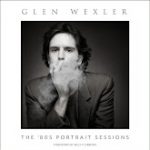

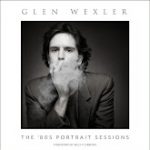
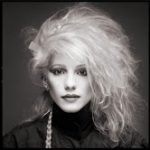
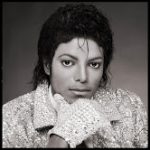
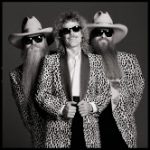
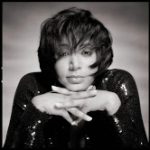
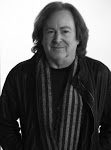
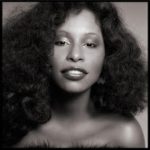

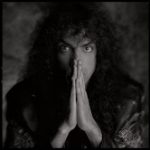

0 Replies to “Glen Wexler interviewed by Jimmy Steinfeldt The ‘80s Portrait Sessions”